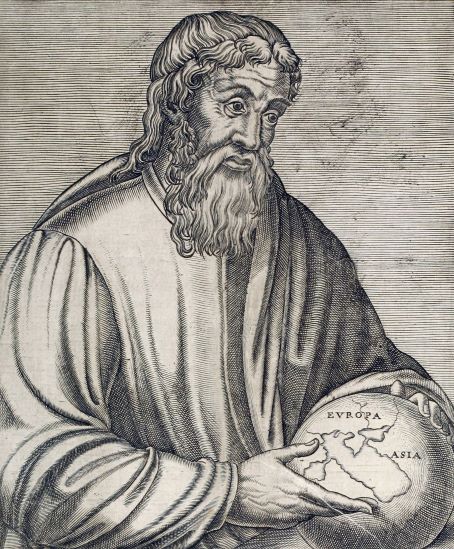Multimodality and multiliteracies in geography: teaching and learning with the pedagogical circuit at Santa Helena School in Santa Maria/RS
DOI:
https://doi.org/10.53455/re.v4i1.109Keywords:
multimodality, multiliteracies, teaching geographyAbstract
Context: With the changes in the globalized world, education has also changed. Multimodality and the Pedagogy of Multiliteracies emerge as proposals for differentiated teaching that dialogues with the reality of students. Methodology: This work proposes teaching through interactive activities that give autonomy, participation, and protagonism to students. A Pedagogical Circuit was carried out at the Santa Helena Municipal Elementary School, in Santa Maria, Rio Grande do Sul, using memes, cartoons, and series known to students. Based on authors who address multimodality, multiliteracy, and active methodologies, this work aims to improve the teaching of Geography, making it more attractive and dynamic, using technology as an ally. Considerations: Multimodality and the Pedagogy of Multiliteracies in the teaching of Geography make learning more engaging and interactive, stimulating active student participation. In addition, the use of cultural and technological references present in students' lives makes teaching more attractive and relevant, promoting a deep and meaningful discussion of geographical phenomena.
Downloads
References
Alves, D. C., & Ribeiro, M. V. G. (2020). A questão dos multiletramentos e da cultura digital no ensino superior da ciência geográfica. Nuances: Estudos sobre Educação, 31, 377-395. https://doi.org/10.32930/nuances.v31i0.8333 DOI: https://doi.org/10.32930/nuances.v31i0.8333
Buckingham, D. (2010). Cultura digital, educação midiática e o lugar da escolarização. Educação & Realidade, 35(3), 37-58. https://seer.ufrgs.br/educacaoerealidade/article/view/13077
Brasil. (2018). Base Nacional Comum Curricular. Educação é a Base. Ensino Médio. Ministério da Educação. http://basenacionalcomum.mec.gov.br/images/BNCC_EI_EF_110518_versaofinal_site.pdf
Cartografia Tátil. (s.d.). Laboratório de Cartografia Tátil e Escolar - LABTATE. Universidade Federal de Santa Catarina - UFSC. https://www.labtate.ufsc.br/cartografia_tatil.html
Cope, B., & Kalantzis, M. (2009). Multiliteracies: New Literacies, New Learning. Pedagogies: An International Journal, 4(3), 164-195. DOI: https://doi.org/10.1080/15544800903076044
Cope, B., & Kalantzis, M. (2016). A Pedagogy of Multiliteracies: Learning by Design. Palgrave Macmillan. DOI: https://doi.org/10.1057/9781137539724
Ferreira, A. B. C., Machado, C. S., & Oliveira, G. C. A. (2017). Por uma Pedagogia dos Multiletramentos – Ontem, Hoje e Sempre. Horizontes, 35(2), 108-111. https://doi.org/10.24933/horizontes.v35i2.490 DOI: https://doi.org/10.24933/horizontes.v35i2.490
Hemais, B. J. W. (2015). Gêneros discursivos e multimodalidade: desafios, reflexões e propostas no ensino de inglês. Pontes.
Liberali, F., Magalhães, M. C. C., Meaney, M. C., Santiago, C., Canuto, M., & Santos, J. A. A. (2015). Projeto Digit-m-ed Brasil: uma proposta de desencapsulação da aprendizagem escolar por meio dos multiletramentos. Revista Prolíngua, 10(3), 2-17. https://periodicos.ufpb.br/index.php/prolingua/article/view/28690
Moran, J. (2018). Metodologias ativas para uma aprendizagem mais profunda. Penso.
Rojo, R. (2012). Multiletramento na escola. Parábola.
Silva, J. M. S., Neto, J. C. N., Pereira, T. H. V., & Arcega, F. A. M. (2021). Integração entre os multiletramentos e a educação midiática: Saberes e práticas docentes na educação básica. Redoc, 5(4), 97. https://doi.org/10.12957/redoc.2021.59471 DOI: https://doi.org/10.12957/redoc.2021.59471
Soares, M. (2001). Letramento: um tema em três gêneros (2nd ed.). Autêntica.
Downloads
Published
How to Cite
Issue
Section
License
Copyright (c) 2023 Rafaela Menezes da Silva, Sandy Goelzer, Jaqueline Noble Masvi de Sousa

This work is licensed under a Creative Commons Attribution 4.0 International License.
The magazine follows the Creative Commons (CC BY) standard, which allows the remix, adaptation and creation of works derived from the original, even for commercial purposes. New works must mention the author(s) in the credits.














